Director: Lee Il-hyeong
Cast: Hwang Jung-Min, Gang Dong-Won, Lee Sung-Min, Park Sung-Woong, Kim Eung-Soo, Joo Jin-Mo, Kim Won-Hae, Jeon Bae-Su, Shin So-Yul, Park Jong-Hwan, Kim Hong-Fa, Lee Suk-Joon, Kim Byung-Ok
Running Time: 126 min.
By Paul Bramhall
More than any other film industry in the world, it’s the Korean one that arguably reflects its countries current tumultuous state. 2016 delivered a president that’s pending impeachment, shady religious figures exerting their influence from behind closed doors, and the upper ranks of companies such as Samsung being investigated for corruption. Understandably, public trust for those in authority is at an all-time low. The current social climate has seen a slew recent titles take aim at those in power, productions that have used such subject matter as an outlet for cinema going audiences to see their frustrations vented onscreen. From political thrillers like Inside Men and Master, to disaster flicks such as Tunnel, to social commentary disguised as a zombie movie with Train to Busan. All of them paint an ugly picture of those in positions of authority.
The theme continues with A Violent Prosecutor, the directorial debut of Lee Il-hyeong, who’s also working from his own script. While it may be his first time going solo in the director’s chair, Il-hyeong is no stranger to working in the field, having served as an assistant director on the likes of 2007’s The Moonlight of Seoul, and 2014’s Kundo: Age of the Rampant. The shoes of the violent prosecutor in question are filled by Hwang Jeong-min, who has steadily worked his way up to be one of Korea’s A-list stars. To some degree I feel that Jeong-min has almost been over-exposed, as in 2014 – 2016 alone he’s headlined 6 movies. From the ridiculously sappy Ode to My Father, through to the energetic action flick Veteran, he’s an actor who rarely puts in a bad performance, although he could perhaps pace himself a little better.
For those not paying attention, many could likely mistake A Violent Prosecutor as a thematic sequel to Veteran, à la the Public Enemy series. Jeong-min plays a veteran prosecutor who always gets the bad guys, even if it involves occasionally having to beat seven bells out of them, but his intentions are good. Basically, the same character as Veteran, but a prosecutor in court instead of a detective on the streets. Thankfully the similarities stop there, with his violent streak being brought to an abrupt end, when a suspect being kept in his custody is found dead the next morning. With his reputation for dishing out beatings, and the suspect being unsupervised at the time, Jeong-min finds himself being made an example of, and is handed a 15-year sentence for murder.
Of course, something fishy is afoot. The suspect had a serious case of asthma, although an inhaler was never retrieved as evidence, and although Jeong-min’s boss (who has aspirations of moving into politics) asks him to plead guilty with the promise of an early release, once the verdict is announced he’s left high and dry. From here on in, the title could be more suitably switched to The Heavily Beaten Ex-Prosecutor, as he gets regularly brutalized by those inmates he was responsible for sending to prison in the first place. However Il-hyeong has clearly watched The Shawshank Redemption, and after an overheard discussion that has one of the prison officers mentioning their legal trouble, soon Jeong-min has himself positioned as the go-to guy for legal advice.
It’s an interesting switch, as the script does an about turn on the titles implication of A Violent Prosecutor, and instead sees Jeong-min resort to his brains in order to make his seemingly inescapable predicament tolerable. Skip forward 5 years, and we’re introduced to a new inmate played by Gang Dong-won (who’s worked together with Il-hyeong before, as the villain in Kundo: Age of the Rampant, and started off 2016 with a role in The Priests). It’s when Jeong-min overhears Dong-won regurgitate word for word the same ecological spiel that the dead suspect had told him 5 years before, that his infamous temper is reignited once more, and he embarks on a mission to prove his innocence from behind bars.
Dong-won’s appearance is a welcome one, having been briefly glimpsed taking selfies as a disguised activist in one of the initial scenes, his supposedly Pennsylvania educated conman steers the movie into prison buddy comedy flick territory (that notably the productions marketing material sold it as). It may seem like a jarring shift after the poker faced opening 30 minutes, but the transition is handled well, with Dong-won’s frequently outlandish outbursts in accented English delivering the desired laughs, regardless of how cheap they may be. Il-hyeong’s script also makes the wise decision of switching the focus to Dong-won, whose character feels like a breath of fresh air compared to Jeong-min’s archetypal Korean tough guy. With an almost effeminate air of confidence, even from behind bars he continues to swindle the clueless rich girls who come to visit him, targeted due to none of them being the brightest tools in the box.
The unlikely pairing of a framed prosecutor and an unrepentant swindler is a winning one, and Jeong-min and Dong-won have a likeable chemistry together, one which carries the movie along at a brisk pace. When Jeong-min figures out he can easily get Dong-won released thanks to a legal loophole, the agreement is made that Dong-won will essentially act as Jeong-min’s avatar on the outside, gathering enough evidence to prove that he was setup. In case it isn’t clear already, A Violent Prosecutor covers a lot of ground, both with its plot but also with its genres. From crime thriller, to buddy comedy, to by the time Dong-won is wining and dining with Seoul’s elite as a lawyer in disguise, it almost feels like we could be watching a caper flick by The Thieves director Choi Dong-hoon.
Thankfully, it all works, with the structural setup deriving a sense of underlying tension thanks to the interaction between the pair. Jeong-min may have everything planned out in his head, but in the hands of someone that’s a compulsive liar, the margin for things to go wrong is a wide one. Of course, said margin is what results in the tension being cranked up to suitably high levels of danger in the 2nd half of A Violent Prosecutor, as the bigger the lie Dong-won has to tell the higher the stakes become. Like any Korean movie that covers this genre ground, the comedic proceedings are sometime offset by sudden outbursts of violence, and Il-hyeong shows that he’s not one to break the trend. In one particular scene a character gets hit across the face with a steel kettle which has just boiled, and in another a character is beaten within an inch of his life. If there’s one thing that Korean’s know how to do well, its violence.
However the constant swaying from extreme violence to comedic hijinks is certainly not something that’s new to Asian cinema, as anyone who’s seen a Sammo Hung movie from the 70’s or 80’s can attest to, but somehow A Violent Prosecutor finds the right balance. Korea has certainly come a long way since the likes of similar productions which attempted to balance violence and comedy, such as 2001’s My Wife is a Gangster, which saw such scenes as a cat being given mouth to mouth resuscitation next to a female being repeatedly kicked in the chest. While such setups left a bad taste in the mouth, the violence here is integrated into the story, serving to move it along, and as a result in never feels as jarring as it perhaps does when being described on paper.
While A Violent Prosecutor certainly doesn’t break any new ground, it succeeds largely in part to both Jeong-min and Dong-won’s pairing, and the genre hopping nature that the plot steers us through. By the time proceedings round off in the form of a courtroom drama, it’s easy to forget that Jeong-min and Dong-won have in fact spent most of the movie apart. With a brisk pace and a welcome sense of humour, Il-hyeong certainly doesn’t feel like a first time director. Whether that’s largely down to the winning chemistry between its leads, or indicative of a new talent that’ll be worth keeping an eye on, time will tell. But for now, I’d like to say it’s both, and for fans of Korean cinema A Violent Prosecutor delivers the expected high production values backed up by an engaging plot and characters. My only hope is that we get slightly more breathing space before the next Hwang Jeong-min flick comes along.
Paul Bramhall’s Rating: 7/10

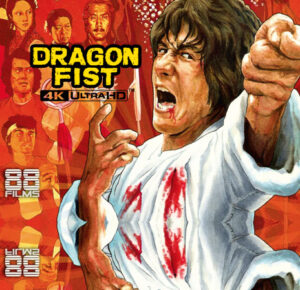



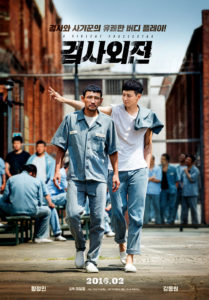

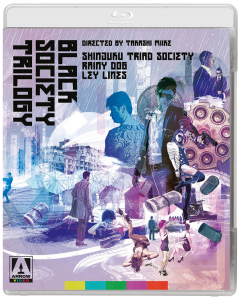

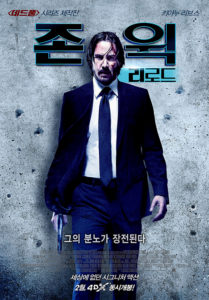
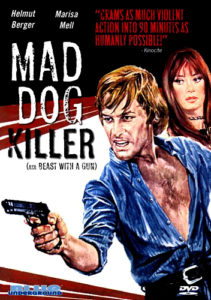
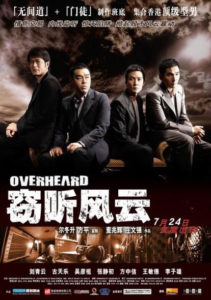
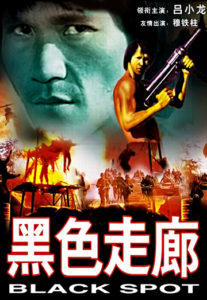
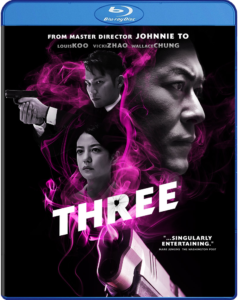


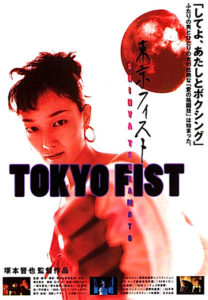
 We first heard about this Yuen Woo-ping (
We first heard about this Yuen Woo-ping (




Be the 1st to Comment